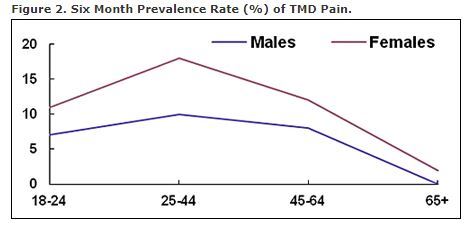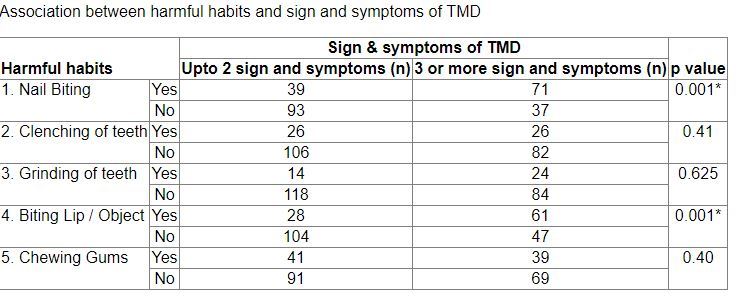Jaw joint pain (Temporomandibular) is associated with low vitamin D in young adults
The Influence of Vitamin D on the Temporomandibular Joint and the Activities of Daily Living.
Source: Journal of Clinical & Diagnostic Research . Nov 2017, Vol. 11 Issue 11, p31-34. 4p.
Author(s): Khanna, Sunali Sundeep; Parulekar, Nikhil R.; Dhaimade, Prita Abhay
 * Trends in the prevalence of diagnosed temporomandibular disorder from 2004 to 2013 using a Nationwide health insurance database in Taiwan Sept 2017
*
* Trends in the prevalence of diagnosed temporomandibular disorder from 2004 to 2013 using a Nationwide health insurance database in Taiwan Sept 2017
*  * Association Between Harmful Oral Habits and Sign and Symptoms of Temporomandibular Joint Disorders Among Adolescents Aug 2015. free PDF online
*
* Association Between Harmful Oral Habits and Sign and Symptoms of Temporomandibular Joint Disorders Among Adolescents Aug 2015. free PDF online
*  *
* 
📄 Download the PDF from VitaminDWiki
Vitamin D levels
| ** | |||
|---|---|---|---|
| Gender | TMJ | Controls | |
| Female | 17 ng | 37 ng | |
| Male | 17 ng | 38 ng | ** |
Introduction: A significant correlation has been established between the pain and/or discomfort of Temporomandibular Joint (TMJ) and the various Activities of Daily Living (ADL). TMJ pain and/or discomfort have a significant negative impact on the daily activities and life of an individual. Although complex interplay of multifactorial causes accounts for temporomandibular disorders, bone markers like serum vitamin D are a reliable qualitative and quantitative tool to asses bone metabolism and health.
Aim: To investigate the association between TMJ pain and discomfort in the ADL and to ascertain the relationship between serum vitamin D 25(OH)D levels and pain and discomfort with respect to TMJ during the ADL amongst controls and vitamin D deficiency patients in an Indian hospital based population in Mumbai, Maharashtra, India.
Materials and Methods: The study included 100 adult patients reporting to the department of oral medicine and radiology on outpatient basis, who were divided into two groups (samples and controls) based on their serum 25(OH)D levels, the cut-off being 30 nmol/L. The effect of vitamin D levels on the activities of daily living were assessed using the scale by List and Helkimo. Variables were evaluated for statistical differences between male and female groups with AnOVA test. Significance of correlation was tested using Spearman rank correlation coefficient. A level of significance of 0.05 was considered to be significant.
Results: In the study it was found that the serum vitamin D levels in female participants was lower than the male participants. The experience of TMJ pain and discomfort significantly impacts the activities of daily living in both sexes based on the rating scale elaborated in medical and behavioral science and modified by List and Helkimo. The study also shows that the pain/discomfort associated with TMJ has a significant negative influence on the social life, daily activities and also the psychological status of the individual.
Conclusion: Vitamin D deficiency is significantly associated with tempormandibular pain, which can have adverse effects on the comfort and ADL of the patient.
